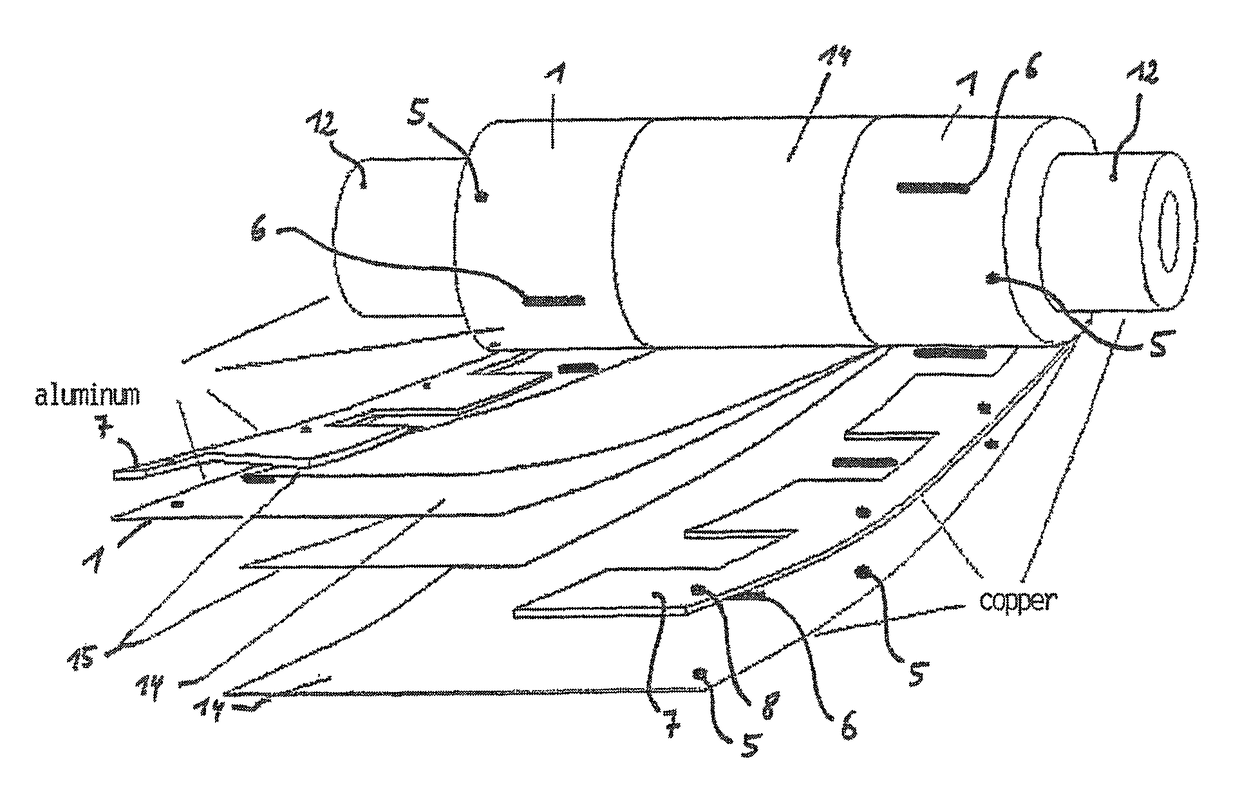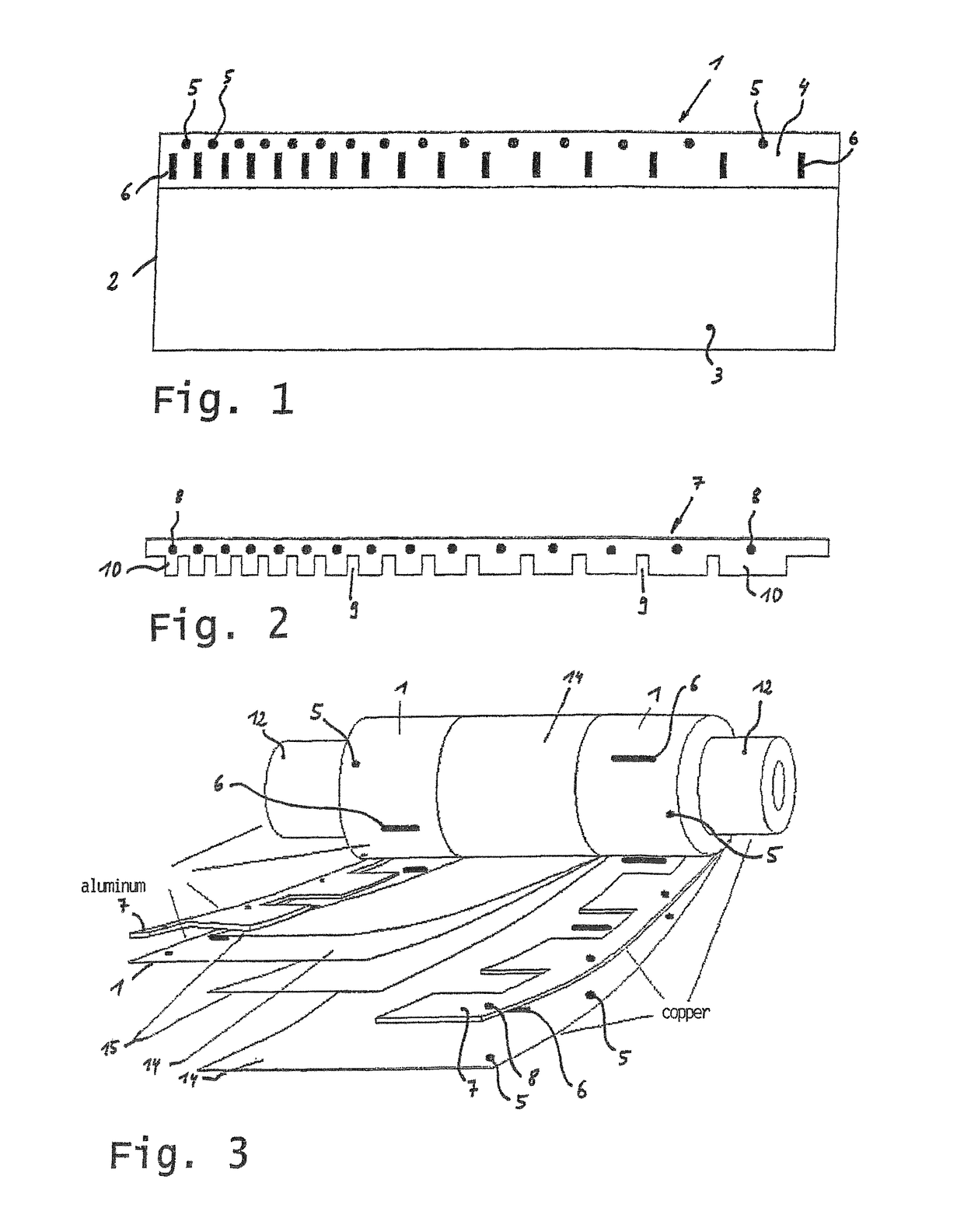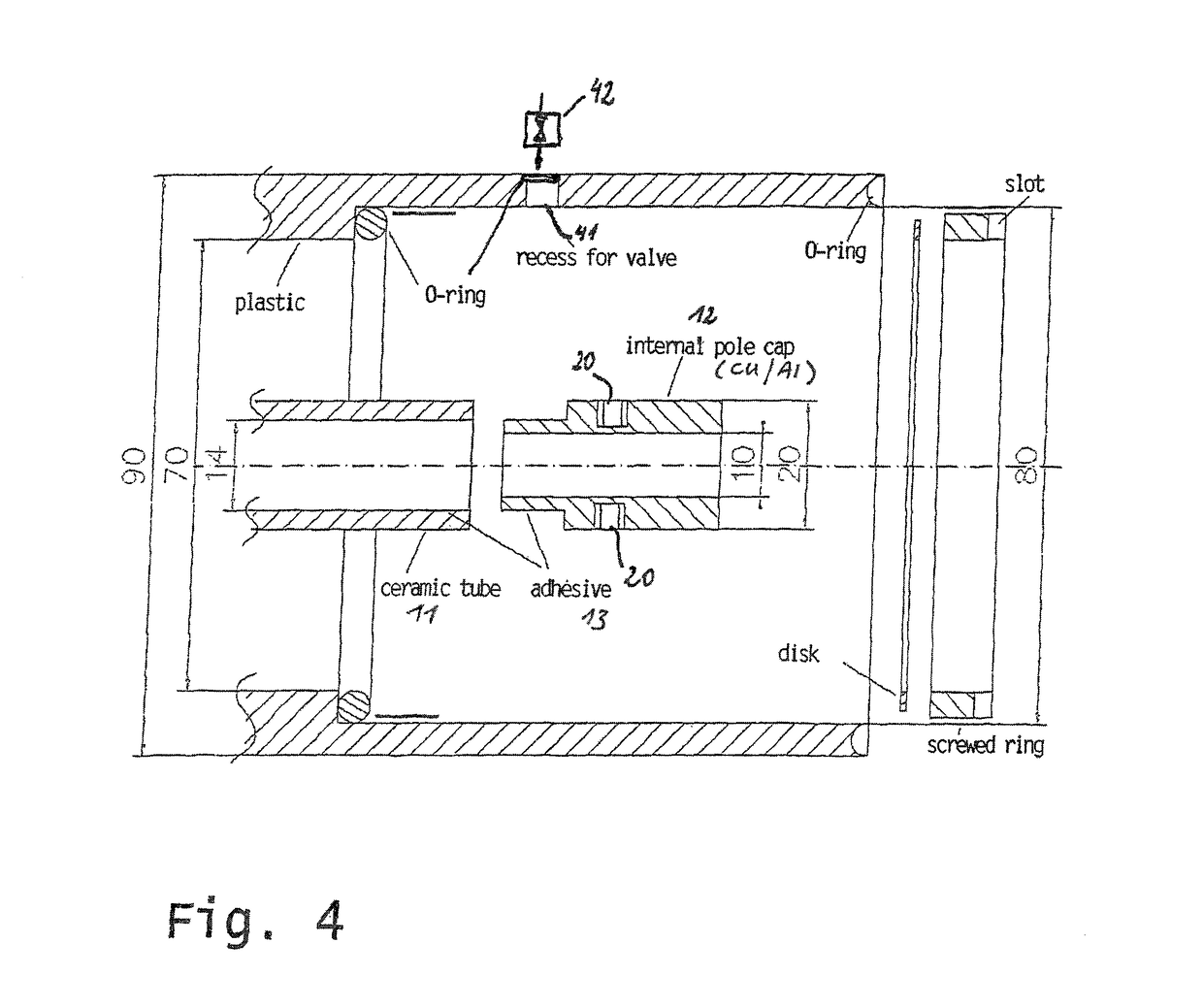Lithium secondary cell array
a secondary cell array and lithium technology, applied in the manufacture of cell components, final product manufacturing, electrochemical generators, etc., can solve the problems of reducing current carrying capacity, complicated technological steps, and power limitation during both charging, and achieves improved wound lithium cell design, low electrical resistance, and simple winding design
- Summary
- Abstract
- Description
- Claims
- Application Information
AI Technical Summary
Benefits of technology
Problems solved by technology
Method used
Image
Examples
Embodiment Construction
[0055]The winding packet of the lithium secondary cell array consists of copper and aluminium foils strips designed as shown in FIG. 1. Only the lower part 2 of the foil 1 is hereby coated on both sides with lithium and carbon black 3. An edge strip in the longitudinal direction 4 remains uncoated. In the free edge area there is a row of holes 5 and a row of slot-shaped breaches 6.
[0056]The holes and slots can be made by punching, whereby this punching process takes place before the coating of the lower part, simplifying the technological handling.
[0057]The gaps between the holes 5 and slots 6 is chosen such that in the finished foil winding, for example, six radial through holes and the same number of offset slots are produced.
[0058]Since the diameter of the winding increases with every layer, the gaps between the holes 5 and slots 6 increase from the inside to the outside (from left to right in FIG. 1). The gap to be observed can be easily dimensioned and technologically realised ...
PUM
| Property | Measurement | Unit |
|---|---|---|
| conductive | aaaaa | aaaaa |
| area | aaaaa | aaaaa |
| temperature | aaaaa | aaaaa |
Abstract
Description
Claims
Application Information
 Login to View More
Login to View More - R&D
- Intellectual Property
- Life Sciences
- Materials
- Tech Scout
- Unparalleled Data Quality
- Higher Quality Content
- 60% Fewer Hallucinations
Browse by: Latest US Patents, China's latest patents, Technical Efficacy Thesaurus, Application Domain, Technology Topic, Popular Technical Reports.
© 2025 PatSnap. All rights reserved.Legal|Privacy policy|Modern Slavery Act Transparency Statement|Sitemap|About US| Contact US: help@patsnap.com



